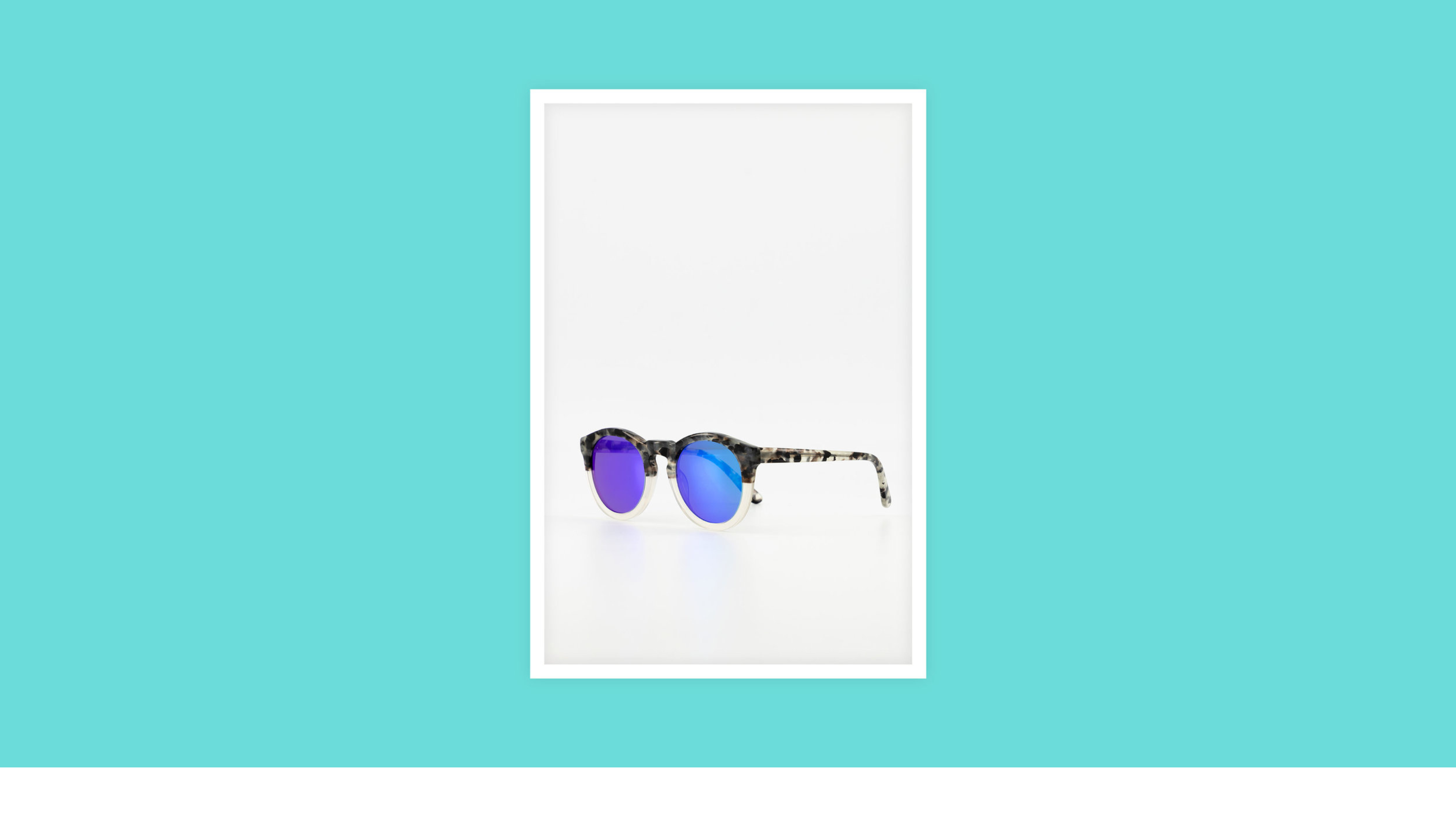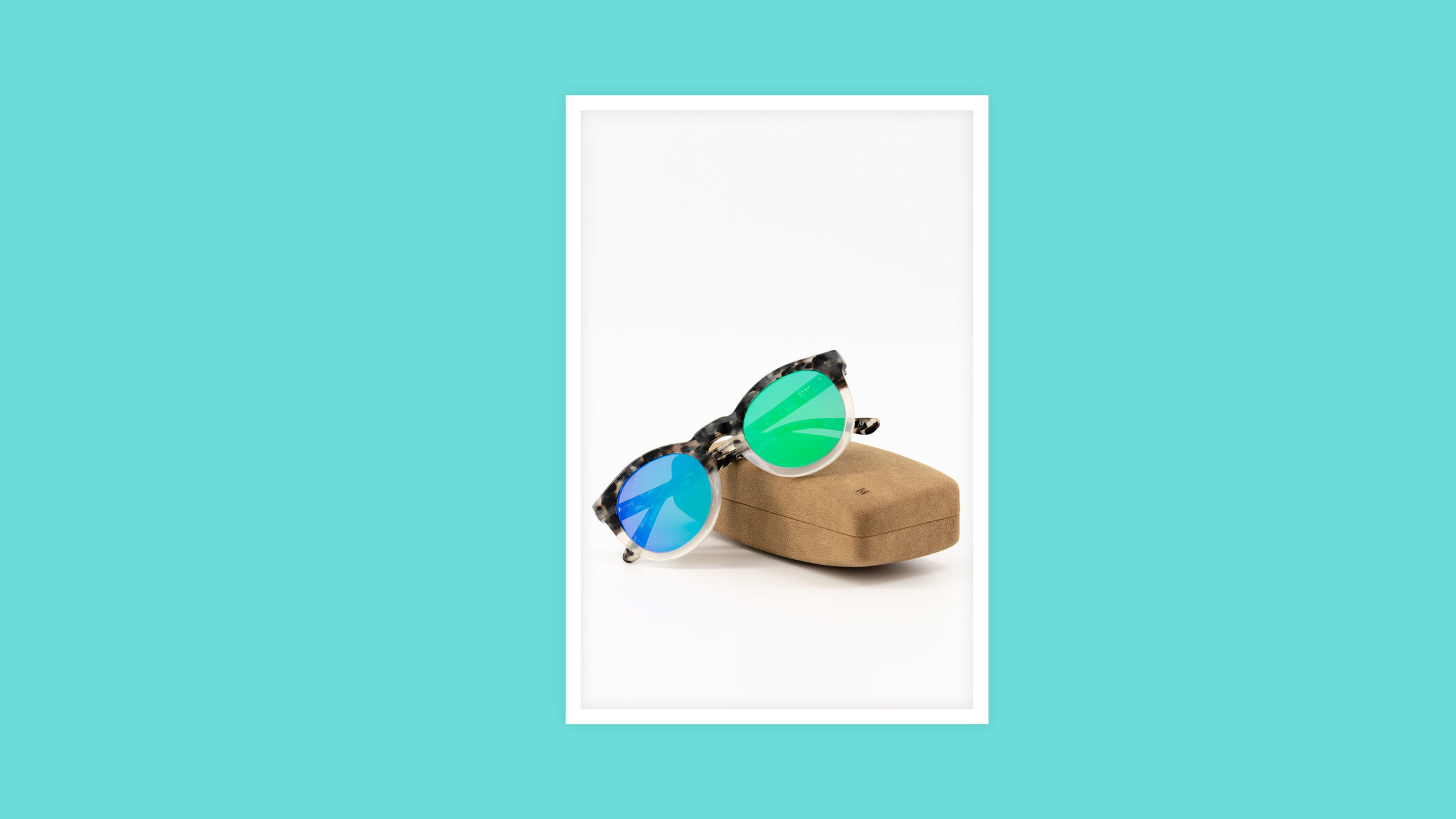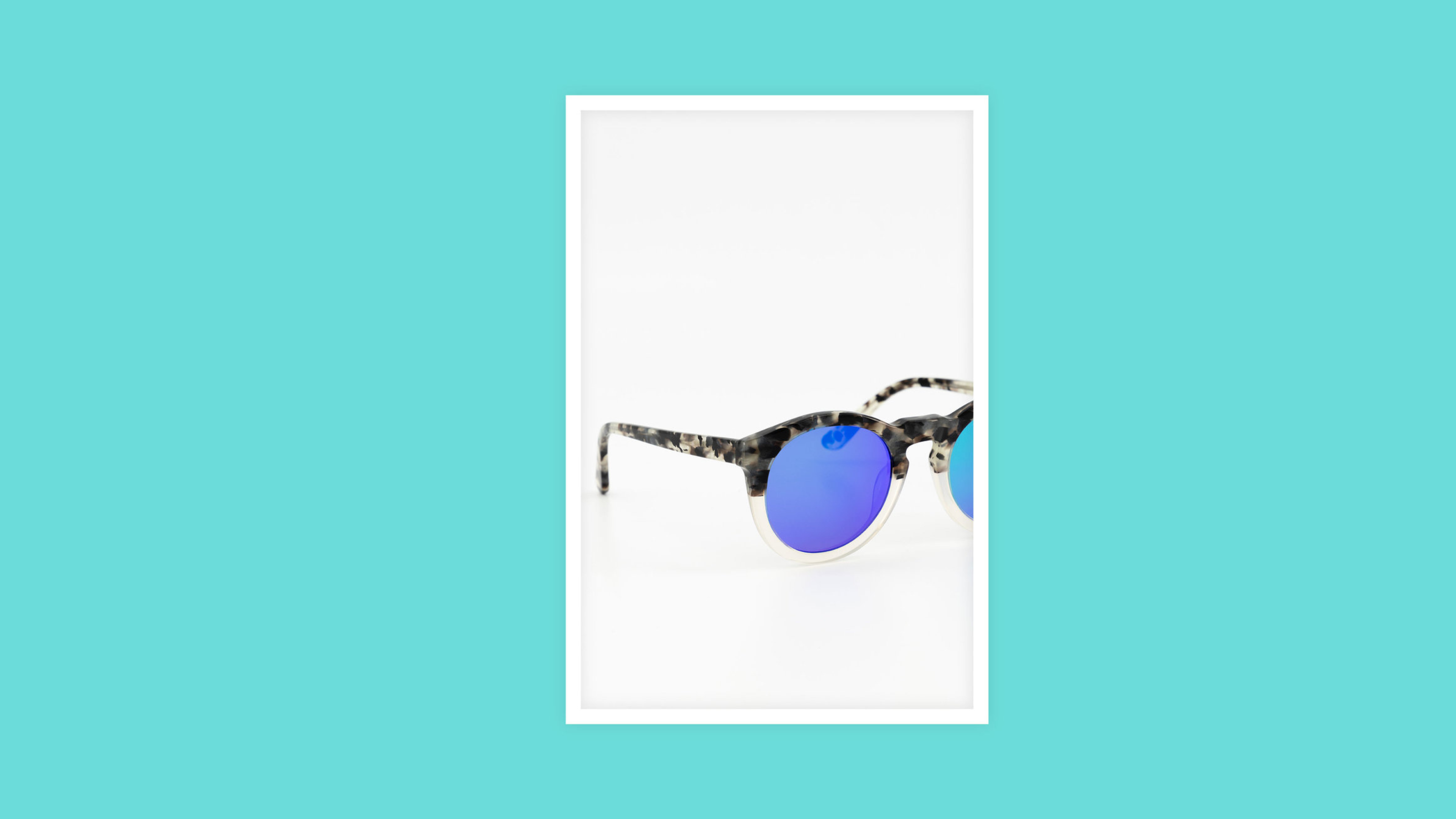How to shoot sunglasses for fashion e-commerce

How to shoot sunglasses for fashion e-commerce.
In this video, we’re going to look at some tips on how to shoot sunglasses.
Now, some sunglasses may be a bit tricky to shoot because of their reflective surfaces. What you want to do is show off the angles, the lenses, the side of the sunglasses where there’s usually some sort of detail. Showing off all these different angles is where the magic lies.
Tips we cover in this post:
- Watch out for the reflections
- Create some context for your shots
- Experiment with angles
You will need:
- A pair of sunglasses
- White card
- Black card
- Water bottle
- A set for the shoot, with the right lights and cameras
Watch out for the reflections
Usually, you’ll have quite a reflective surface with sunglasses. You’re going to need something to reflect into the front of the sunglasses. You can use something white, like white card e.g.
You might be losing some detail at the edge of the sunglasses because the light spills onto it and it creates an unwanted reflection. You can get a black card and stick it to a “weight” object like a water bottle in our case - that’s going to add some negative fill.
Make sure your surface is white. It also helps if the rest of your set is also white. With our Eclipse machine, the doors are white so when you close them, it creates a nice full environment that fills up the reflection of the glasses.
For the next shot, we’re going to do a 45-degree shot just so your viewers can see the edge of the sunglasses where there might be some detail. If your reflections are looking really good and the arms of the sunglasses are not flaring out, it’s pretty much good to go.

Create some context for your shots
Put the packaging in there- the box that the sunglasses came in. That’s going to give your customer a good idea of the brand and what you get when you order the sunglasses. Just give the customers as much information as possible.
Fold up your sunglasses and then place them on top of the box they came in. Then stick them on just so they’re leaning on the case. The hero is still sunglasses. But it is good to have a little bit of the logo, the branding and the case in there.
So when you start shooting make sure you’ve removed all the unnecessary lines in there, you should clean those up. Get a little bit of a white card and place it in the reflection zone. Just to clean up the area of reflection. By putting in that card strategically, you’ll clean up that reflection. There are no lines in it anymore. Now you can go ahead and shoot that one, just make sure you’re on focus.

Experiment with angles
During this, keep the same camera height as well as tilt angle so all the shots should line up nicely on the page. Do a nice close-up detail on the top of the sunglasses, the frame where you catch a bit of the lens as well (just as an extra shot). Aim for shallow depth of field, just make sure to focus on one corner.
Do a video of the sunglasses that will show you how the light moves along the lenses. That way you can see how the colors change on the product in the video. That’s one of the main goals of the doing video in the first place. That’s something you wouldn’t necessarily see on still images. Show how the colors react to light!
You can use the Sequence mode on Eclipse - it will shoot all your 3 shots automatically and it will stitch them together into a nice complete video. There’s a rotating turntable inside and that’s great because you don’t have to go in there and manually move the sunglasses around to fit a certain angle.

To sum up, some good tips for shooting sunglasses:
- Beware of your reflections - check what you have reflected on your product, make sure you’re not seeing the whole of your studio
- Choose some angles that will show off your sunglasses’ details - the lenses are important, the arms, the frames
- Give the customer as much info as possible - add the case in there to show the customer what they’ll be getting and give them as much brand feel as possible
- Don’t be afraid of video - it is the perfect way to show how the colors of the product interact with light